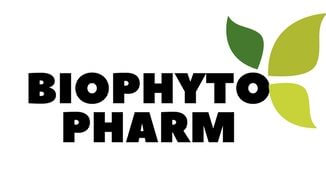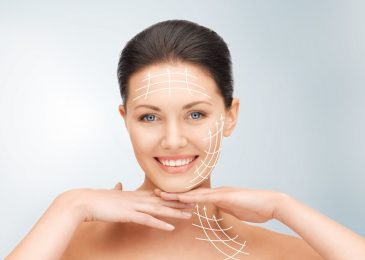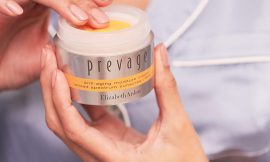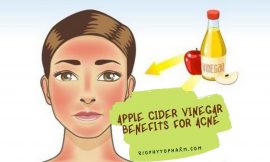UNDERSTANDING HOW YOUR SKIN WORKS TO GET THE BEST RESULTS

The 1st secret to having clear, smooth and healthy skin is to know your skin and understand how it works. Then analyze and find out your skin type. This will allow you to give it the care it deserves and to appreciate why certain factors are good for it and others are not.
You would need a good understanding of what your skin is made up of. This will enable you to make the right decisions about your cosmetic and medical needs. Knowing your skin and its key functions will help you to look after your skin better.
WHAT ARE THE KEY FUNCTIONS OF THE SKIN?
So, do you know your skin? What is it? How does it work? The skin is the largest organ in the body. Its key functions are:
- Insulates us from the cold by retaining heat
- Perspires and helps you to cool down
- Offers protection from potentially harmful things, infection, and injury
- Disposes of waste in the body.
- Certain waste such as urea is disposed of from your body through your skin throughout the day.
- Manufacture Vitamin D from sunlight
- Is a sensory organ that can feel heat, pressure, pain, touch, and pleasure
The skin reflects your emotions. It becomes red when you’re embarrassed and quickly begins to show signs of stress.
Knowing your skin and understanding that it has the ability to cleanse, heal and even renew itself is important. How effectively it does this is partly governed by how well you have taken care of it.
You should not just take care of the skin on your face. You should also take care of the skin of your body.
Know your skin and understand it’s a condition as it is an overall reflection of your health. It reveals stress, a poor diet, or a lack of sleep. Taking care of your health will benefit your skin.
WHAT ARE THE 3 LAYERS OF THE SKIN?
To get to know your skin, you need to understand that the skin has 3 main layers and each layer has its own functions. The 3 layers of the skin are the epidermis, dermis, and subcutis.
EPIDERMIS
Do you know your skin’s epidermis layer? It is the outermost layer of the skin. It looks clear and feels smooth when healthy. To remain healthy, old cells need to be replaced by new cells.
The functions of the epidermis are
- Provides protection to your body and helps to prevent infections and invasions
- Helps to maintain the moisture level of the skin
The epidermis is made of a total of 5 main layers. Each layer comprises living cells with layers comprising dead cells on top.
Do you know your skin is growing constantly? New cells are produced at the bottom layer. The cells die quickly. The formation of new cells pushes these dead cells up until they reach the skin’s surface. The cells which are dead will flake away eventually.
Isn’t it good to know your skin and that it is constantly renewing itself? Each new layer provides another opportunity for healthy skin and a complexion that is glowing. The living cells at the skin’s lower levels are fed with nutrients. This comes from the blood supply beneath the skin. The dead cells at the upper levels need water which will help ensure a smooth and plump complexion.
The epidermis gives skin coloring. This is where the skin’s pigment is held. Do you know your skin does not share the same thickness throughout your body? As an example, the skin on the feet’s soles is much thicker compared to the skin on the eyelids.
DERMIS
The middle layer of the skin is called the dermis. It is just beneath the epidermis. When healthy and richly supplied with blood and moisture, it gives the skin plenty of volume, firmness, and radiance. The whole dermis is comprised of living cells and is made up of a lot of fibers. These fibers are tough and make your skin elastic, firm, and strong. There are blood vessels that feed nutrients to the skin.
Unlike the epidermis, the dermis cannot renew itself. It is good to know the skin and the dermis which is the middle layer of the skin can be damaged permanently through injury. The dermis has a number of organs with specialized functions.
Sebaceous Glands
Very tiny organs known as sebaceous glands appear on the skin’s surface as hair follicles. Oily secretions known as sebum are produced here. It is a lubricant for the skin.
You will not find sebaceous glands in most areas of the skin. They are found mostly on the face and scalp. In particular, it is concentrated around the cheeks, nose, forehead, and chin. That is why you should know your skin and these areas which are usually more oily. The oily areas across the forehead and down the nose and chin are called the T-zone.
Sebum secretion is controlled by hormones and reaches its maximum protection when you reach about 20 years of age. Production decreases after that.
Eccrine Glands
Eccrine glands are commonly called sweat glands. You will find millions of these sweat glands spread out throughout your body. The sweat glands exist to help control the body’s temperature. The skin’s temperature drops when the body sweats and evaporation take place.
Apocrine Glands
These are found only in the underarm and anogenital regions and are associated with hair follicles in the dermis. Hairs will grow from these hair follicles. Apocrine produce sweat in small quantities and produce an unpleasant body odor when broken down by skin bacteria.
SUBCUTIS
The subcutis is the innermost layer of the skin. It is made mainly of fat. Its main functions are
- Serves as a shock absorber
- Protects the internal organs
- Insulates the body against the loss of heat
- Acts as an energy reserve
WHAT IS YOUR SKIN TYPE?
FREE TIPS ON TAKING BETTER CARE OF YOUR SKIN
True beauty starts from within. To have beautiful skin, you need to begin internally. It has a lot to do with your diet – what you eat, your digestion – the general well-being of your internal organs, your hormone levels, your stress levels, and the overall state of your health. Here are many free skincare tips to help you find a comprehensive daily approach to maintain your optimum skin care.
WINTER SKINCARE TIPS
The condition of your skin is affected by the weather and changes in weather conditions. Check out these winter skincare tips especially when the weather turns cold. If you are traveling to a country with colder weather, these free tips will definitely come in useful.
BABY SKINCARE TIPS
Start to take care of the skin of your children even when they are babies. It will go a long way to help you retain a healthy complexion when you are older. Babies have very sensitive skin and may easily break out into rashes due to skin irritants. Choosing the correct baby skincare products is a very important step in baby skincare. Check out these free baby skin care tips and develop a daily skincare routine for taking care of your children.
SKINCARE TIPS FOR TEENS
Start to take care of your skin from an ung. It will go a long way to help you retain a healthy complexion when you are older. Youths in their teens experience hormonal changes in their bodies as they grow. Acne is a common problem. Check out these free skin care tips for teens and develop a daily skincare routine for taking care of your skin. There is also a lot of information on sun damage, sun protection, and safe tanning tips. This is especially important if you love the great outdoors.





